- 1. What To Avoid
- 1.1. Can I Harvest Wild Edibles Around The Neighborhood?
- 2. What Wild Plants Are Edible?
- 2.1. Familiar Looking Berries
- 2.2. Wild Onion (Allium)
- 2.3. Wild Garlic (Allium ursinum)
- 2.4. Wild Asparagus (Asparagus Officinalis)
- 2.5. Dandelion (Taraxacum officinale)
- 2.6. Wild Ginger (Asarum)
- 2.7. Chickweed (Stellaria media)
- 2.8. Lambs Quarters (Chenopodium album)
- 2.9. Stinging Nettle (Urtica dioica)
- 2.10. Broadleaf Plantain (Plantago major)
- 2.11. Sheep Sorrel (Rumex acetosella)
- 2.12. Curly Dock (Rumex Crispus)
- 2.13. Ground Ivy (Glechoma hederacea)
- 2.14. Miner's Lettuce (Claytonia perfoliata)
- 2.15. Common Milkweed (Asclepias syriaca)
- 2.16. Wild Leeks (Allium tricoccum)
- 2.17. Tree Nuts
- 2.18. Aquatic Edible Wild Plants
- 3. The Universal Edibility Test
- 4. Make Your Way With KUHL

Nature Provides: Edible Wild Plants You Can Forage in the USA
Table of Contents [Show]
If you are an avid hiker, you have probably seen a few tasty-looking berries or aromatic herbs while out on the trail but were unsure whether they were safe to eat.
There are lots of tasty, edible wild plants we can find along the trail that are entirely safe to consume. Then again, there are also a lot of plants that are potentially harmful. Knowing how to spot safe and unsafe plants to consume is paramount to enjoying the wondrous world of vegetation that is at your disposal.
Fortunately, you do not have to be a certified botanist or survival expert to spot edible plants in the wild. Contrary to popular belief, most North American vegetation is safe to consume. The challenge is finding plants that are both tasty and nutritious.
In this article, we discuss plants you should avoid; plants that are safe to eat and easy to spot; and a universal test you can use to help determine whether a wild plant is edible or not.
What To Avoid
When you are venturing through the forest, you may stumble upon a lush leafy plant that looks safe to eat. However, do not be fooled by its appearance! There are a lot of wild plants that look like familiar edible ones but are potentially harmful.
A prime example is a hemlock, which looks just like wild parsley but could be potentially deadly if consumed. Because looks can be deceiving, only bite into a plant that you are sure is safe to eat.
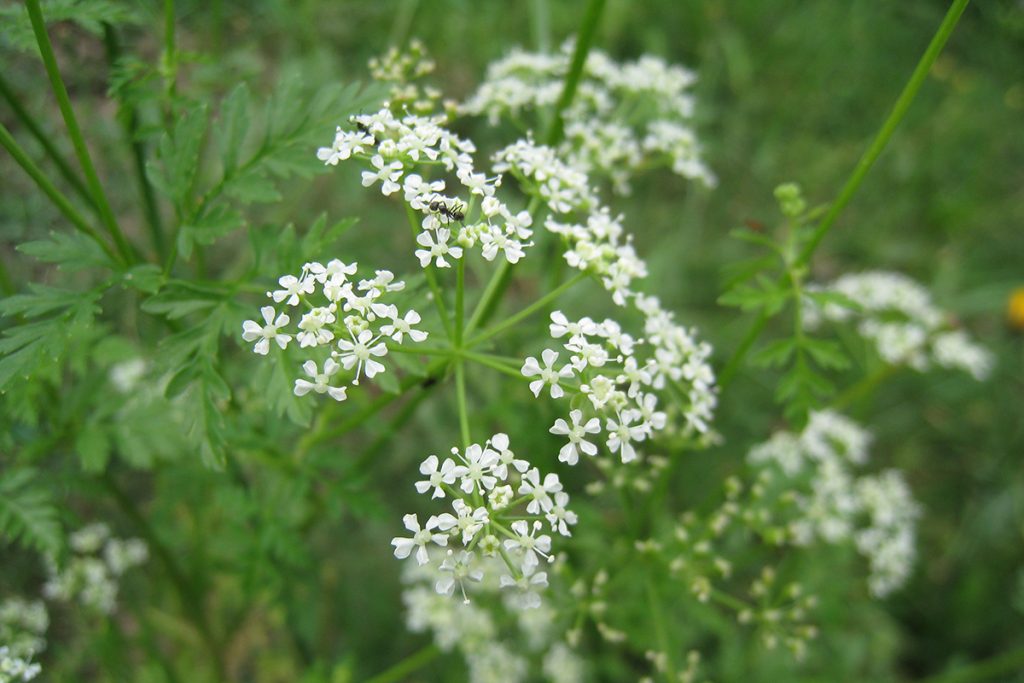
Can I Harvest Wild Edibles Around The Neighborhood?
Many of these wild greens are not only found out on the trail but also in neighborhoods. A lot of people view these edible wild plants as pesky weeds that they wish to get rid of by spraying chemicals on them.
Wherever you are harvesting these plants, be sure to ask around and check whether or not they have been sprayed. You do not want to consume them if they have chemicals on them.
What Wild Plants Are Edible?
Familiar Looking Berries
Wild berries can be a great source of calories. Unfortunately, finding edible fruit is a little bit trickier. There are a lot of wild fruit out there that can make you sick, and there is no definite rule of thumb to determine what is safe. Not to mention, many tasty and delicious wild berries have potentially deadly doppelgangers.
However, there is one essential point to remember: avoid consuming any white berries you come across.
For your well-being, only eat wild berries you can recognize with absolute certainty. Aggregate berries, such as raspberries and blackberries, are all delicious and safe to eat. They are easy to spot due to their tightly packed cluster of fruit. Likewise, elderberries are also quite common in the forest and easy to spot due to their purplish color and umbrella shaped cluster.
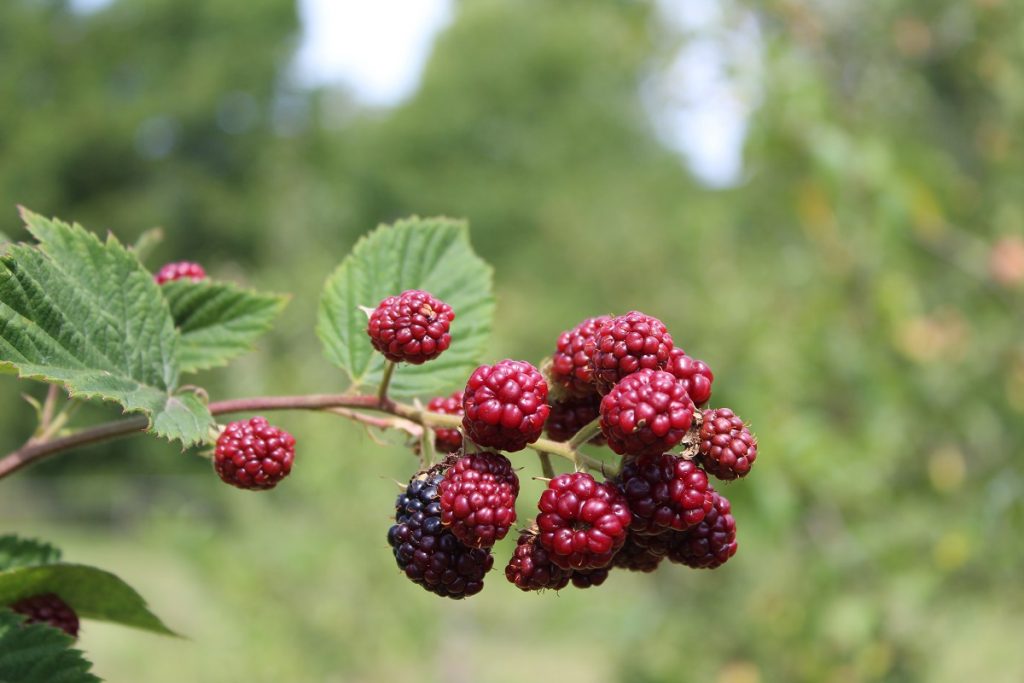
Elderberry (Sambucus)
Elderberries are a delicious fruit that can boost the immune system. Black elderberry shrubs can be found in moist habitats in full or light shade. You'll often find them on lake and pond shores as well.
You can identify this edible wild plant by looking for small bumps along with the woody bark. The leaves are oblong with sharp serrated edges. They are arranged in opposite pairs with 5 to 7 leaves on each stem.
It is rather easy to identify during its flowering stage as the elderberry plant produces a cluster of small white flowers. When the flower turns into a berry, it becomes dark purple to almost black.
Elderberries should not be eaten raw but are safe to eat when cooked or dried for making teas.
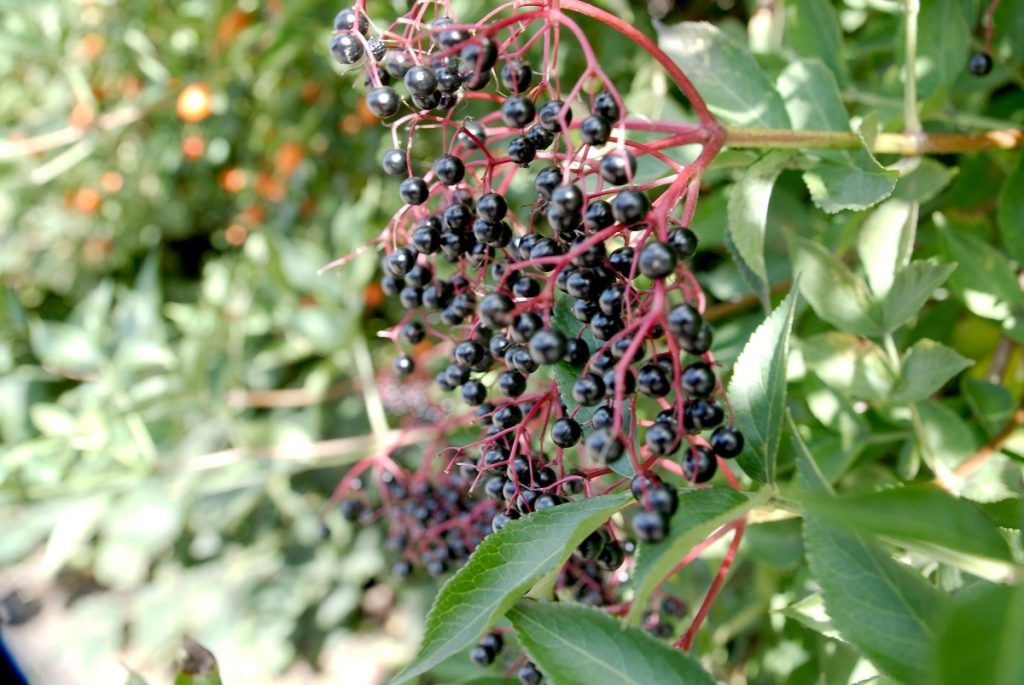
Huckleberry (Vaccinium)
Huckleberries can be found in mountainous regions, forests, and lake basins in the northwest US. There are at least 12 different species of huckleberry with berry colors ranging from black, blue, and red.
The berry is small and round, very similar to a blueberry. The leaves of the huckleberry shrub are smooth, green, and oval with no special characteristics. The berries have a sweet, tart flavor and you can eat them fresh.
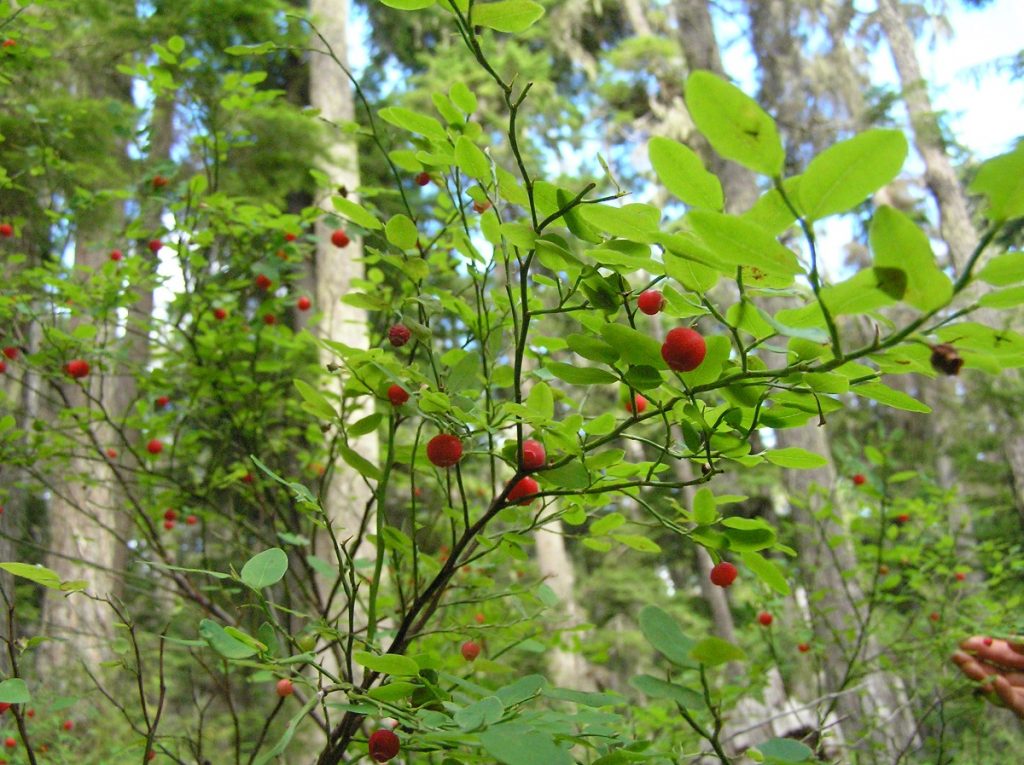
Mulberry (Morus alba)
Mulberries are a tasty treat packed with vitamin C. These berries grow in mild to subtropical regions in the northern and southern hemispheres. There are different species of mulberry with berries ranging from colors of dark purple or black, white, and red.
The berries grow in clusters almost like blackberries. If you find a tree with short leaves and the base is heart-shaped, then it is probably a black mulberry. If the leaves have rounded teeth on the edges, then it is a white or red mulberry.
Mulberries are juicy and sweet. They can be eaten fresh or used for other purposes such as making herbal tea.
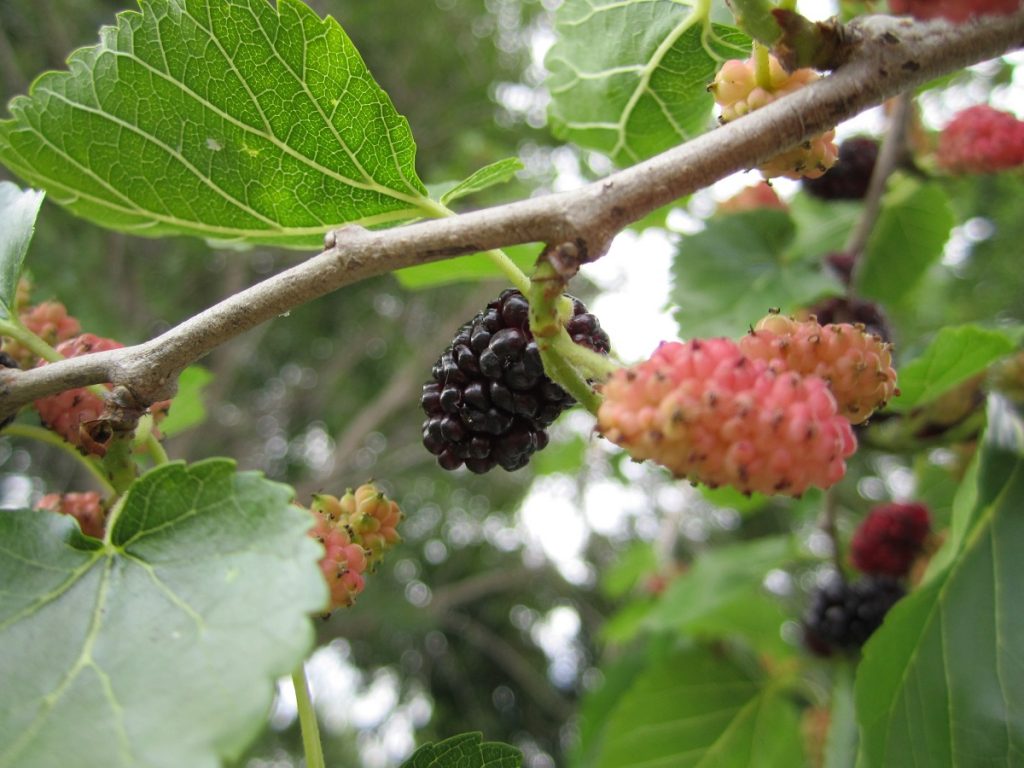
Salmonberry (Rubus spectabilis)
Salmonberries can be found in moist coastal forests along the shoreline. These berries are orange-red and grow in clusters similar to the blackberry or raspberry. The leaves are trifoliate and have serrated edges.
These berries are rather tasteless but they can be eaten fresh. They are more popularly used for making jams, wines, and baked goods.
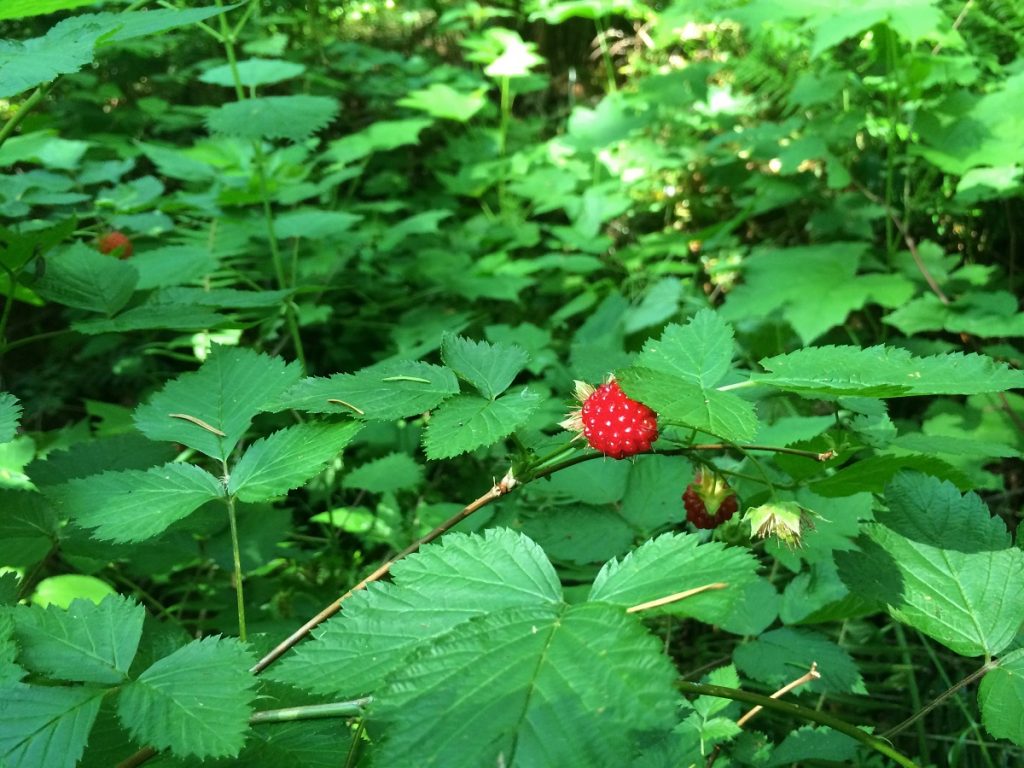
Juniper Berry (Juniperus)
Juniper berries are great medicine for multiple different purposes. The berries are edible, although when eaten fresh in large quantities, they could be slightly harmful. They are more traditionally used for spices in cooking or used as an infusion for drinks.
This berry grows on an easily identifiable pine tree mostly in the Western United States. The berry is round and light to dark blue in color. They have a fresh, woodsy, pine flavor.
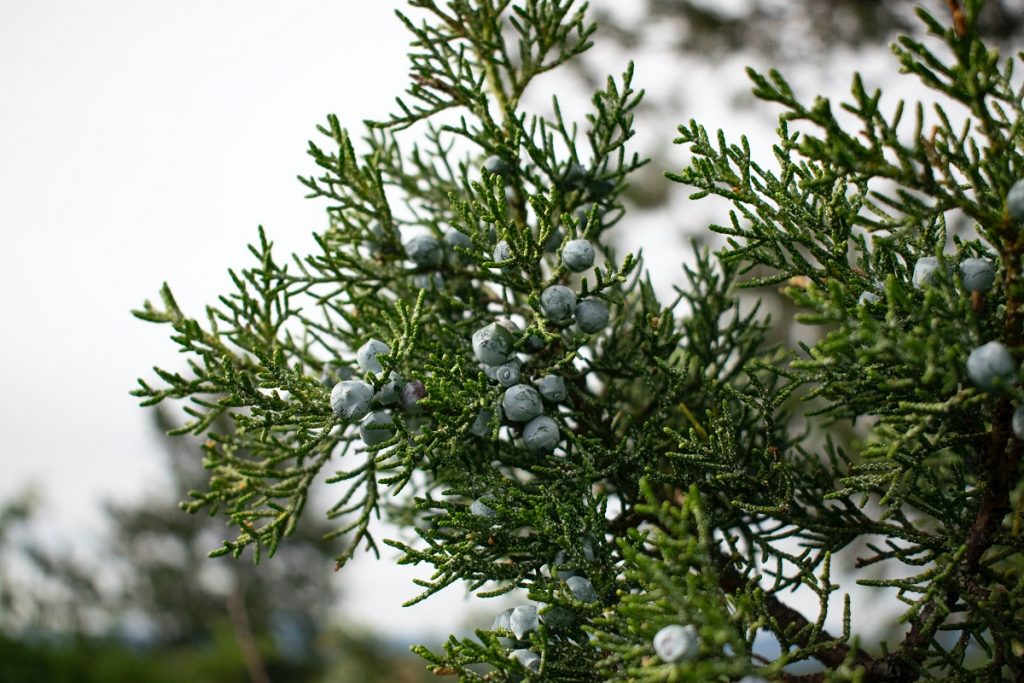
Wild Onion (Allium)
Wild onion is an abundant and safe plant that grows in forests throughout the country. More than 100 species can be found in North America! They usually grow in clumps ranging from hundreds to even thousands of them, so if you stumble upon one, you may have an entire afternoon harvest. It’s best to harvest the largest shoots and leave the small ones - take only 10 to 20 percent of any given patch.
Onion bulbs grow in the ground and have long flat green leaves. The best way to tell if the plant is onion is by using your nose. If it smells like onion, then it's onion. However, if it smells like something or else, or does not have a smell at all, it's best to discard immediately, as it could be a deadly death camas!
Wild onions have flat leaves as opposed to their cousin, wild garlic, whose leaves are round.
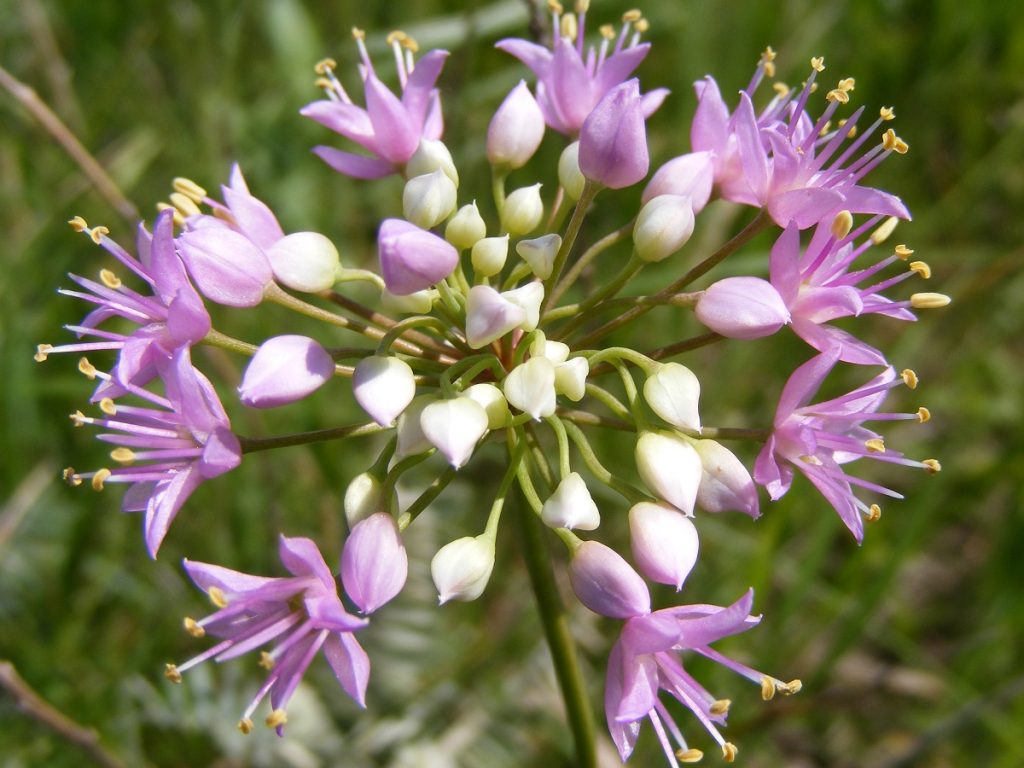
Wild Garlic (Allium ursinum)
Just like a wild onion, wild garlic can be found in large quantities. You will find these edible plants in shady, damp woodlands.
The leaves are bright green, long, and pointed with a smooth edge. When wild garlic blooms there will be clusters of small white flowers.
To tell if it is garlic or not you can pick up a leaf and rub it between your hands in search of that typical garlic odor. All parts from the bulb, to the leaves, and flowers are edible.
Also, many people like to eat Garlic Mustard (Alliaria petiolata) - a widely found invasive species.
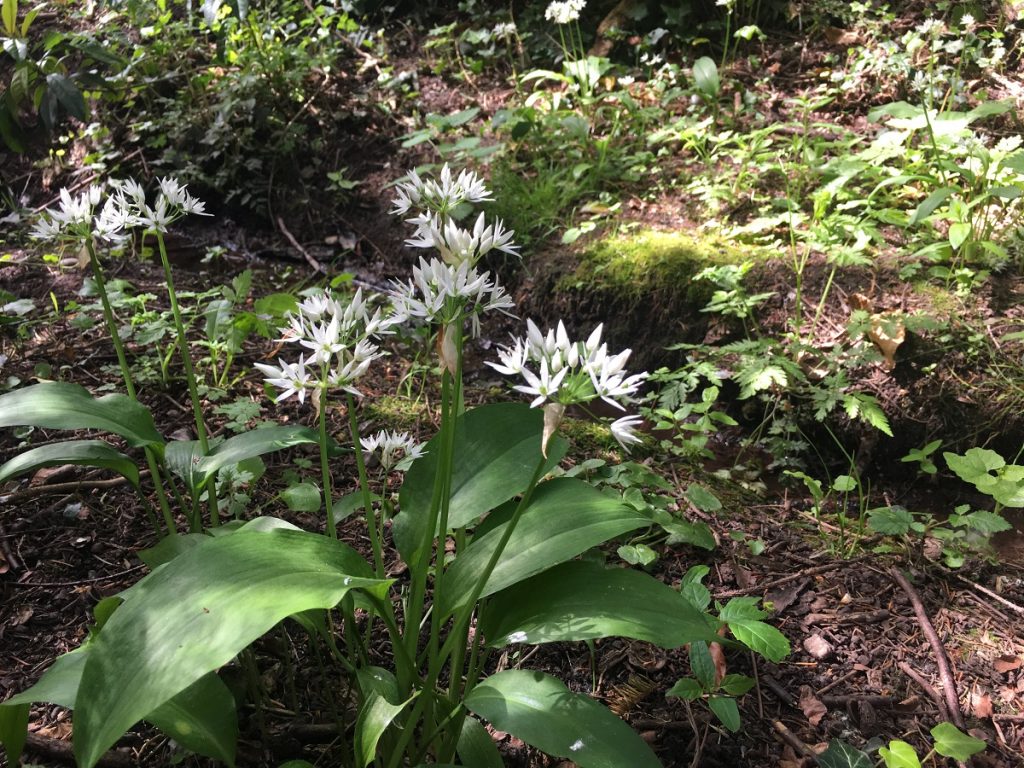
Wild Asparagus (Asparagus Officinalis)
This plant is everyone's favorite - Wild Asparagus makes a tasty treat if you’re able to find it. The plant likes full sunlight and moist loose soils, so it’s best to look near water sources.
The best time to find asparagus is in the spring. It can be easily identifiable by its stalk that looks exactly like the store-bought asparagus. You can eat these fresh or cooked however you like.
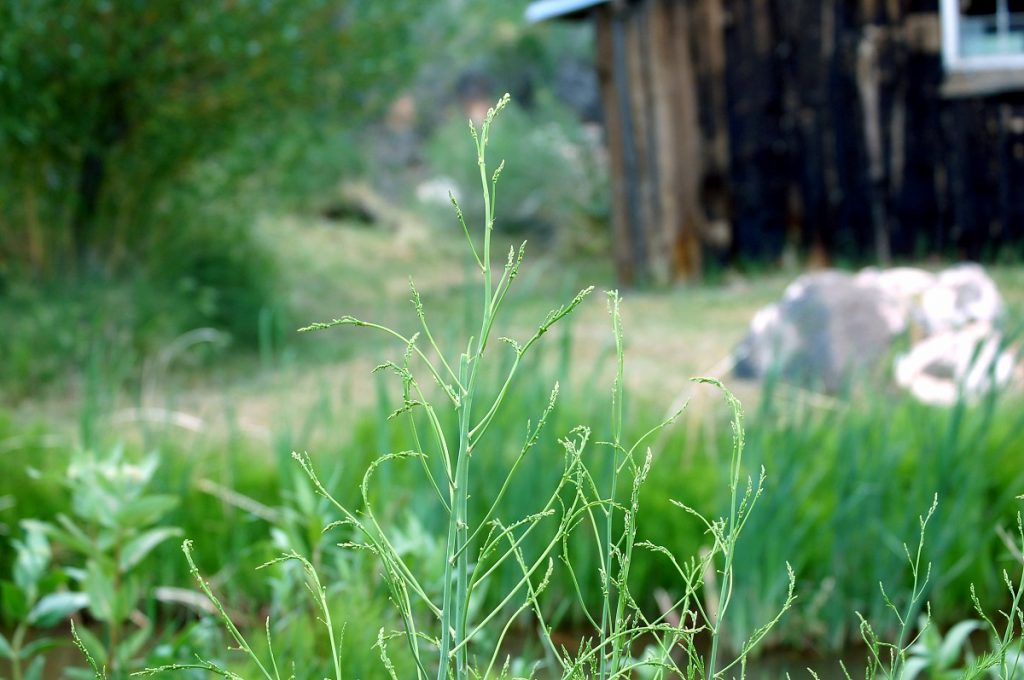
Dandelion (Taraxacum officinale)
Dandelion is one of the most common plants that you will see either in your neighborhood or out in the forest. This plant is packed with all types of nutrients that help our body detox in multiple different ways. Dandelions are easily identifiable with their bright yellow blooms and lobed leaves that grow from the bottom of the stem with milky sap.
The whole plant is edible, although when eaten raw it has a bitter taste. You can either add them to salads or boil them to get rid of their bitterness. You can also harvest the root and make teas or a coffee alternative.
The best time to harvest dandelion leaves is during early spring when the leaves are most tender. You can also look for younger plants grown in shaded areas as they are less bitter than ones grown with full sun. The best time to harvest the root is in the fall when all the power-packed nutrients have seeped down into the ground.
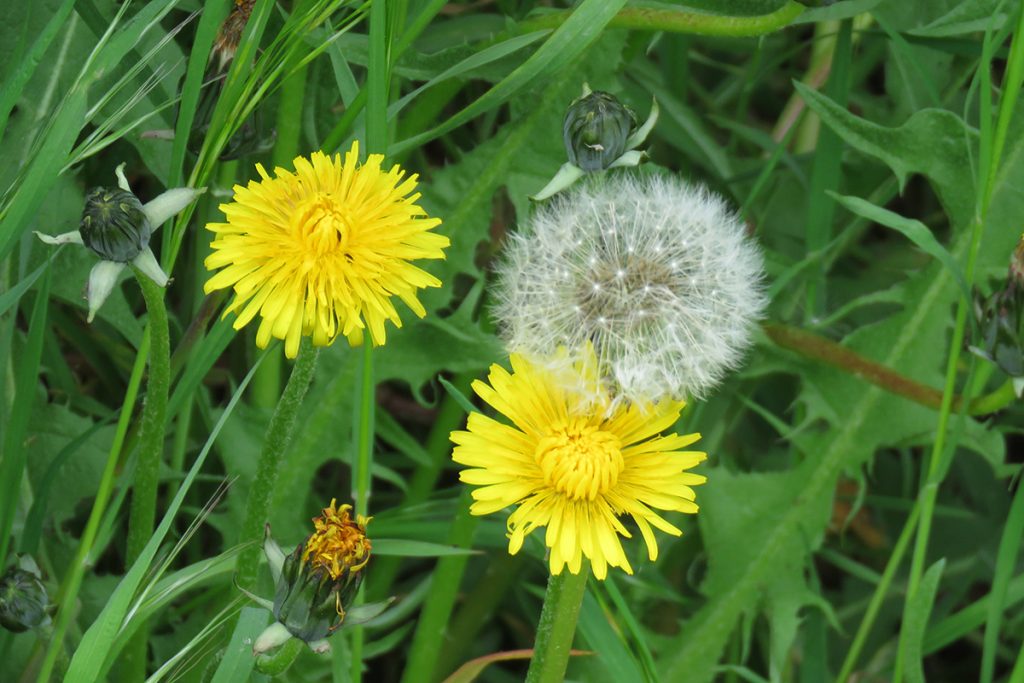
Wild Ginger (Asarum)
For the most part, wild ginger can be found throughout the eastern half of the US. It grows in rich moist soils, in shady forests.
You can identify this plant by seeing its roots, or rhizomes, that grow along the ground. The leaves come in two pairs, are dark green, and heart-shaped. You can tell if it’s ginger by its smell because the odor will be exactly the same as traditional ginger root.
Wild ginger is mildly toxic if eaten raw, but the leaves and rhizome are great for teas.
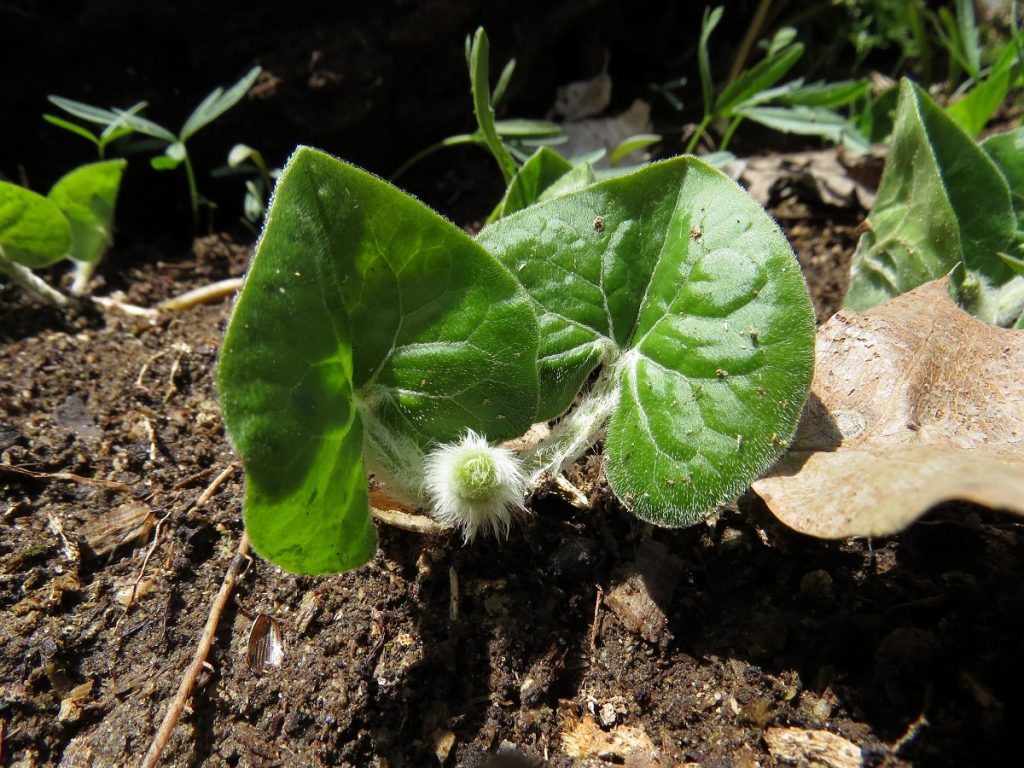
Chickweed (Stellaria media)
Chickweed is a common yard weed that is quite delicious. This plant can be considered similar in taste to spinach or sprouts and is full of nutrients that our bodies need. You can eat the plant raw or dry it out and make tea.
Chickweed grows only a few inches up off the ground. The leaves are small and teardrop-shaped with a pointed tip. The leaves grow opposite of each other along the stem. Flowers are small with five white petals that have deep clefts, which means it may appear as if there were ten petals. There are also leaves around the base of the flower-covered with very fine hairs.
To identify the plant correctly, look for fine hairs on only one side of the stem in a single band. Every above-ground part of the plant is edible from the stem to the leaves, including the flower. The best time to harvest chickweed is in the spring and fall. It flowers between May and October. You'll usually find this plant in shady wet areas and grows prolifically in cultivated locations. It’s best to use scissors to cut the top six inches of the plant off rather than pulling it out of the ground.
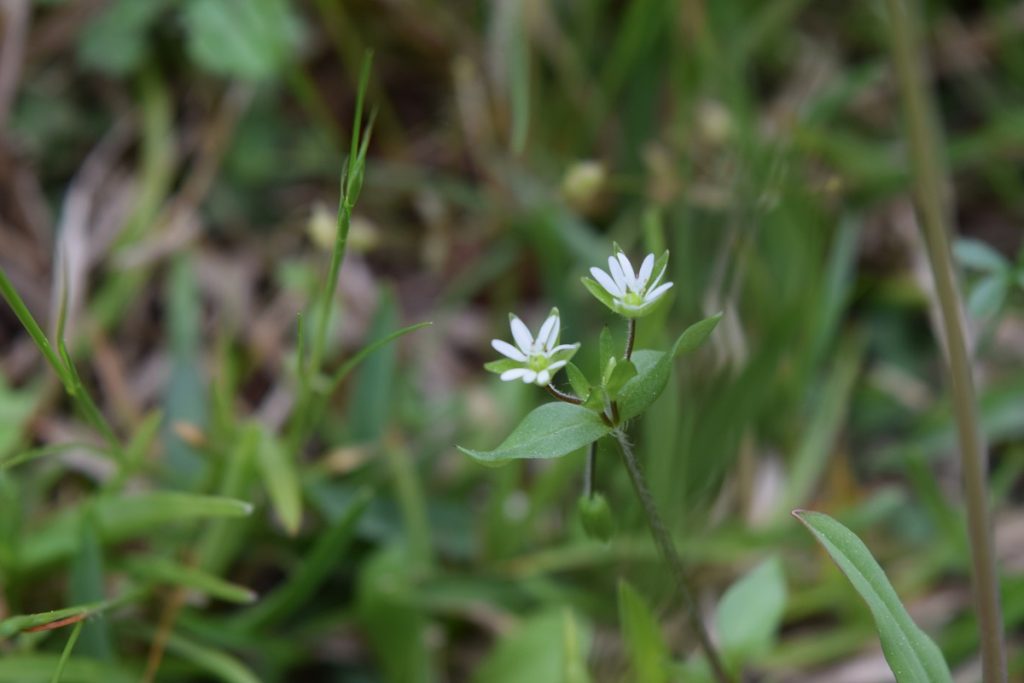
Lambs Quarters (Chenopodium album)
Lambs quarters, or wild spinach, is another common weed that can be hard to ignore once you’ve seen it. This green plant is found all over the place! It's a truly delicious delight that is packed with nutrients like protein, calcium, phosphorus, iron, vitamin C, and vitamin A.
The most notable way to identify lambs quarters is by a fine white powder that covers the entire plant. This powder is a water repellent for the leaves and has no harmful effects when eaten. The leaves are light green on top, slightly white underneath, and have some teeth along the edges that may sometimes be outlined in a pink-purple hue. The stem has a purple stripe from the root to the tip. There are also clusters of small, green flowers. The most common height of this plant is 3 to 5 feet.
Edible parts of the plant include flowers, leaves, and stem. The seeds are also edible but only in small quantities. The most popular part is the leaves, as you can use them the same way as the regular spinach.
The best time to harvest lambs quarters is early in the morning when the temperature is cool. Be sure to pick the young leaves as they will be tender and give the best results.
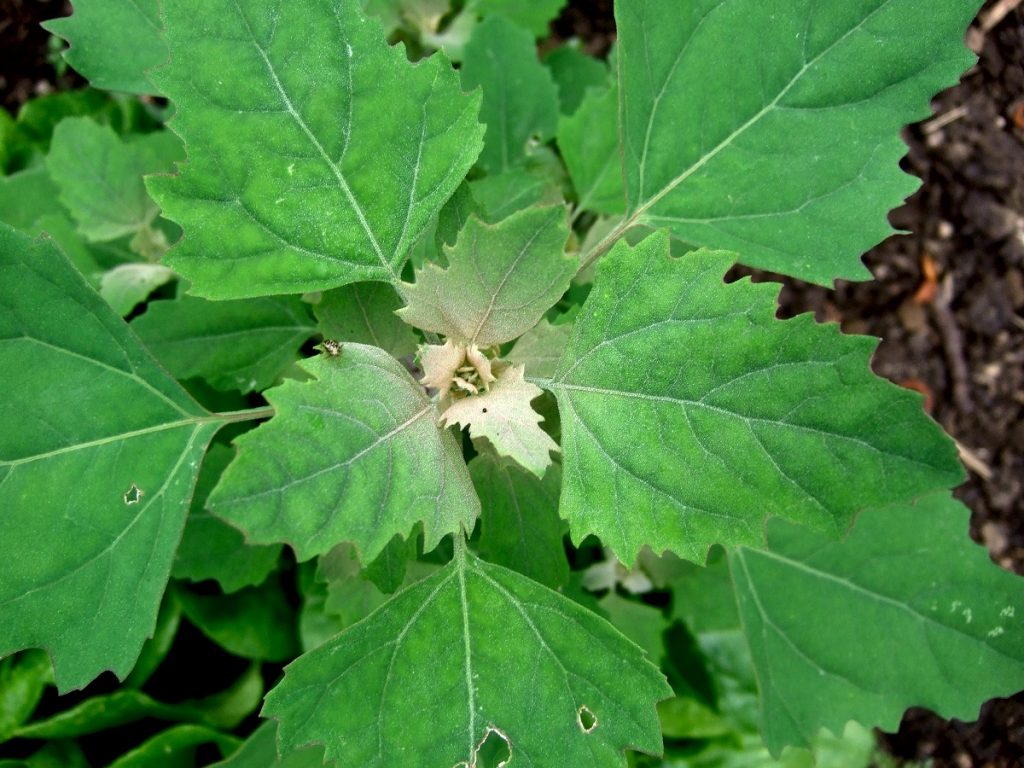
Stinging Nettle (Urtica dioica)
Stinging nettle is a rather underrated green that many people usually avoid because of the leaves that may irritate or “sting” the skin. However, this plant has been used in many different cultures for centuries and is also praised for its multiple healing properties.
This edible wild plant grows in damp, fertile soil. You’ll be able to identify stinging nettle by observing the hairs on its stem, the toothed opposite leaves, and pointed ends. The stem, roots, and leaves are all edible, though it’s highly recommended to dry or cook the leaves before consuming as this neutralizes the stinging sensation and still gives you all the benefits of the plant.
Spring is the best time to harvest the leaves. It's ideal to find a plant that is no more than a foot tall, as that’s when the leaves will be most tender. To safely harvest the leaves, wear gloves and use scissors. Cut about 2 - 3 inches above ground level just above where there are two leaves branching off, as this encourages new growth.
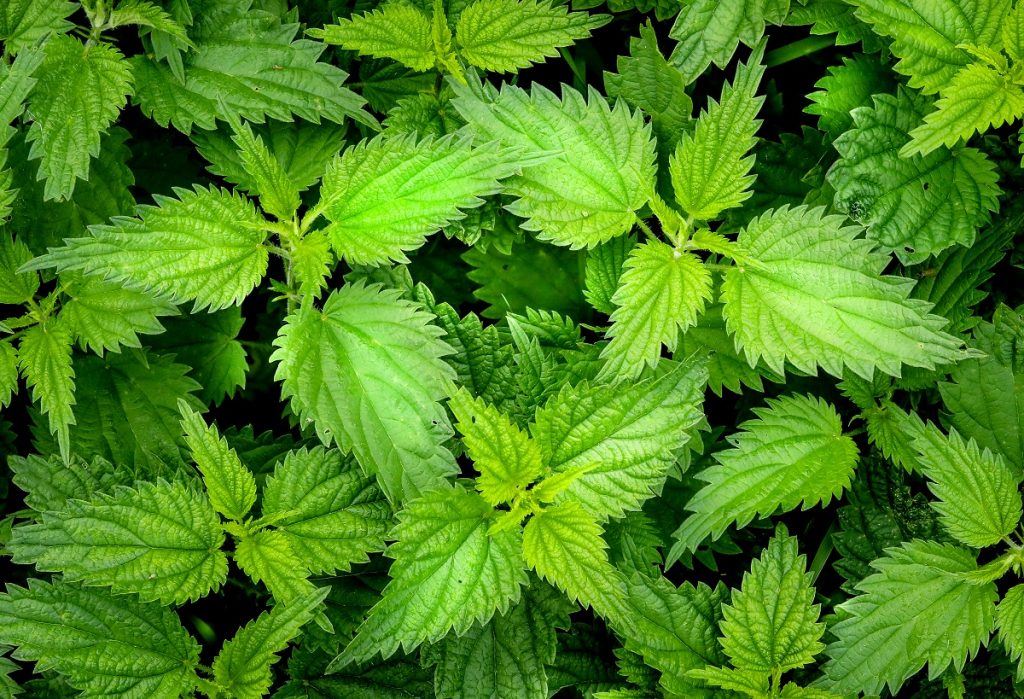
Broadleaf Plantain (Plantago major)
Broadleaf plantain is a delightful wild green that you can find in fields, grasslands, footpaths, and near roadsides. It prefers disturbed habitats with poor, compacted soil. It’s full of vitamins A, C, and K.
Wild plantain can be identified by its dark green leaves that grow close to the ground at the base of a central flower spike that’s covered in small flowers.
This plant not only tastes great when eating the leaves raw, but it can also be used to treat bug bites, scrapes, or rashes by chewing on the leaf and applying it to the skin to make a poultice. Broadleaf plantain has antibacterial, antimicrobial, anti-inflammatory, and astringent properties. This plant provides many benefits in the world of healing.
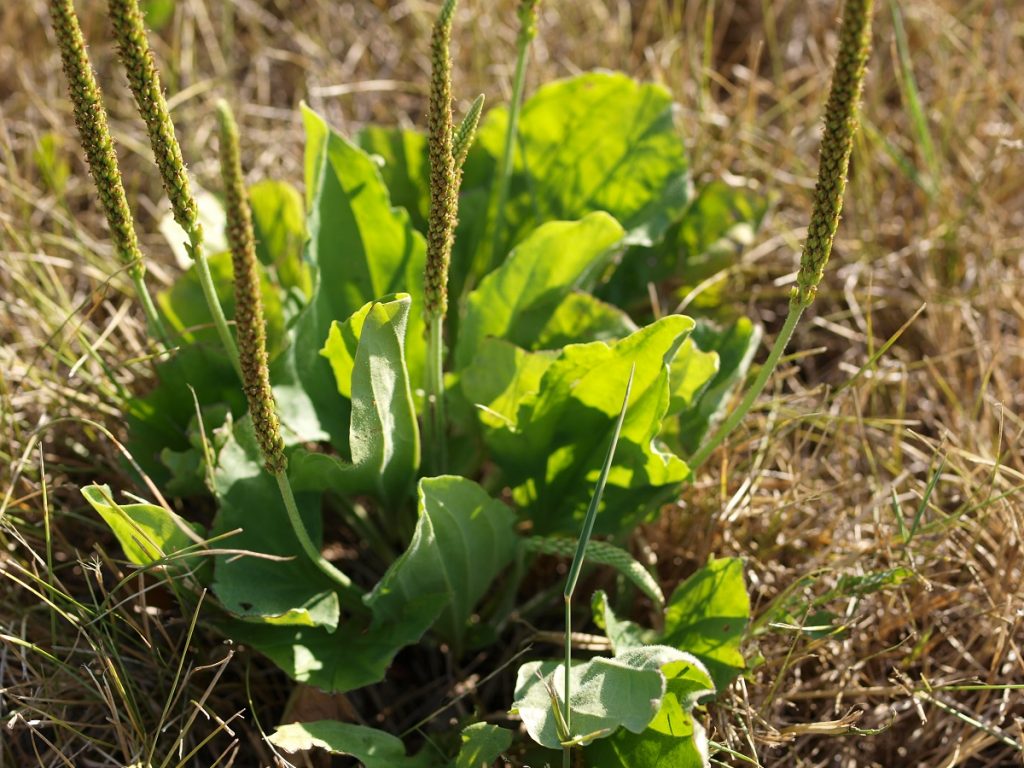
Sheep Sorrel (Rumex acetosella)
Sheep Sorrel is another wonderful wild edible that you can find in many soil types.
You can identify this plant by its unique arrow-shaped leaves and when in bloom the stem produces red flowers in females and yellow-green flowers in males.
Sorrel is known for its distinct tangy, lemon-flavored leaves which can be eaten raw or cooked. Sheep Sorrel, like all other types of sorrel, contains oxalic acid which could be slightly harmful in large quantities. The oxalic acid dissipates when you cook the plant.
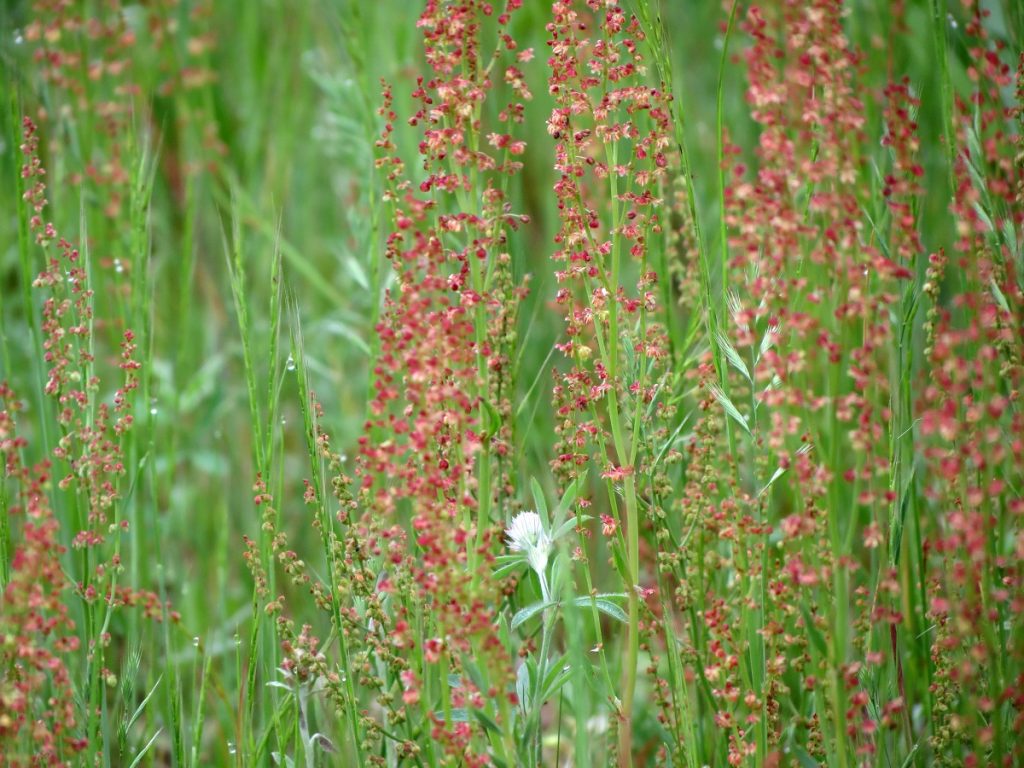
Curly Dock (Rumex Crispus)
Curly Dock is a common edible weed that you will find all over the United States.
Its leaves are hairless, long, and narrow with curly edges. Docks grow as a rosette of leaves around a central crown at the soil level. When a dock matures, it sends up a flower stalk that can grow up to three feet tall. It also has leaves along the stalk. Eventually, the stalk will ripen and turn a rusty brown color.
Stick with the younger leaves if you're looking for a good taste, as the plant tends to have a slightly sour taste if you eat it raw. You can also cook it, but keep in mind that Curly Dock leaves work great in salads!
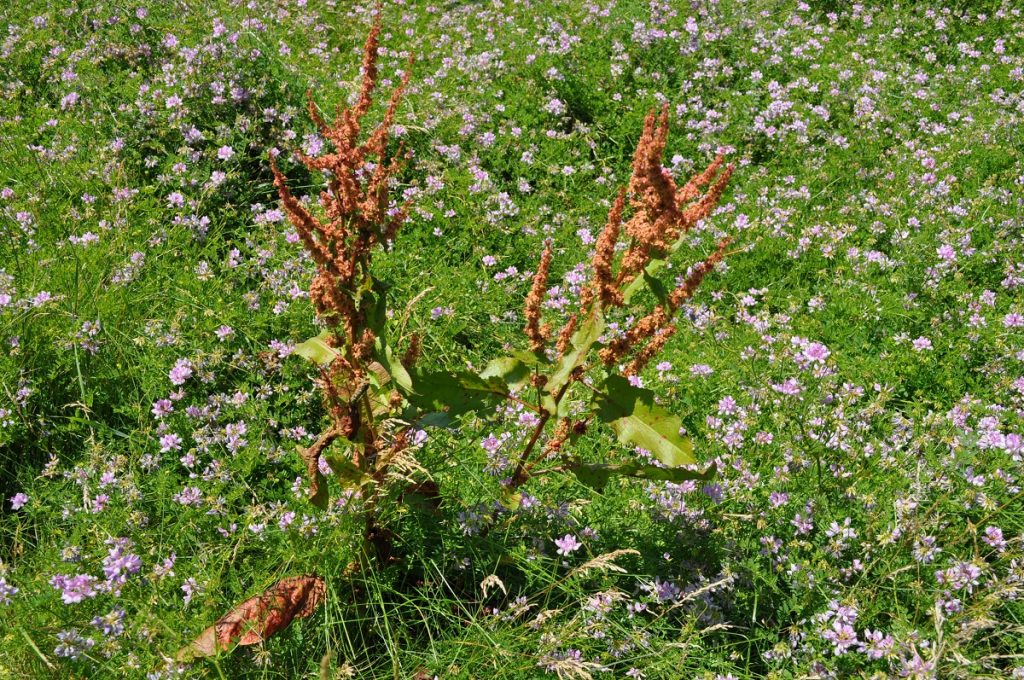
Ground Ivy (Glechoma hederacea)
Ground Ivy, as its name suggests, can be found in large clusters all over the forest floor. You’ll find this plant growing in rich, moist soils that are full of shade.
This wild edible herb is part of the mint family and can be identified by its square stems that have two small leaves branching from each node. If you crush the leaf in your finger you’ll be able to smell the unmistakable mint scent.
You can eat the leaves alone, though they give a pungent minty flavor, so it’s also a great addition to different meals or teas.
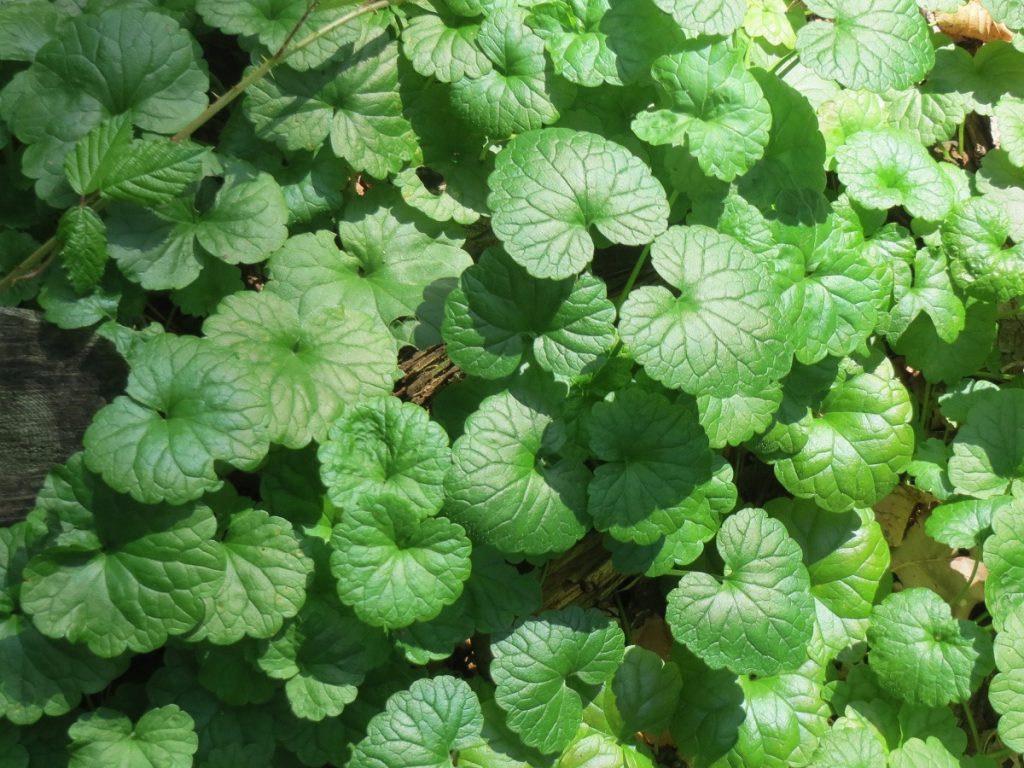
Miner's Lettuce (Claytonia perfoliata)
Miner’s lettuce gets its name from miners who used to eat the leaves to prevent scurvy, as these leaves provide a significant amount of vitamins A and C.
The leaves of the miner’s lettuce are small, round, and light green. The stem passes directly through the center of the leaf which makes it easy to identify. When in bloom the flowers will be growing on top of their rounded leaves and show a white to pink color.
This plant grows in moist, shady areas along streams in the desert and in the mountains. The flowers, leaves, and roots are all edible and you can consume it raw or cooked. Older leaves may be bitter, especially in the summer. The best time to harvest miner's lettuce is early spring, and can also be found in winter.
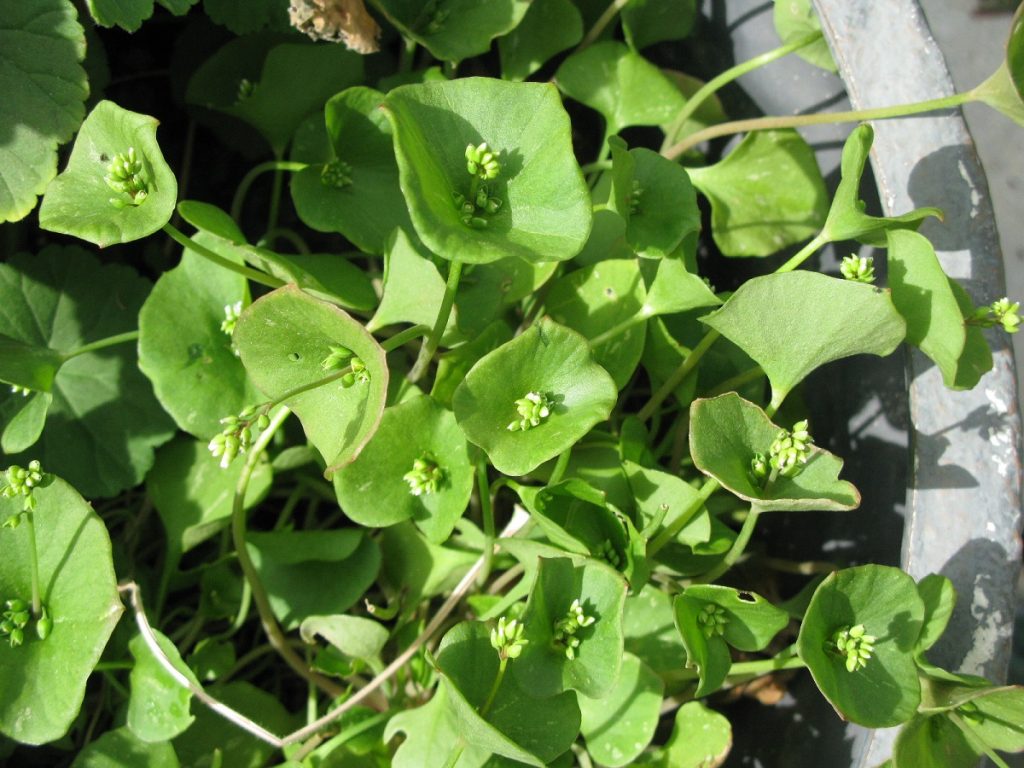
Common Milkweed (Asclepias syriaca)
Common milkweed is a versatile green that can be used in multiple different ways. The best way to identify milkweed is to tear a leaf and see if there’s a milky sap emitting from the leaf.
Common Milkweed will have broad and thick leaves ranging from 10 to 20 cm long. The leaves are arranged in opposite pairs on the stem. The flowers are pale pink or violet arranged in spherical umbels.
Common milkweed is slightly toxic to humans when eaten raw or in large amounts. Taking the time to boil or cook this plant will make it safe to eat. You can boil the leaves as a tasty green, or cook the young shoots as if they were asparagus. The seed pods can also be cooked to resemble okra.
There are many different species of milkweed and some of those are toxic plants! It’s important to take the time and care by properly identifying common milkweed.
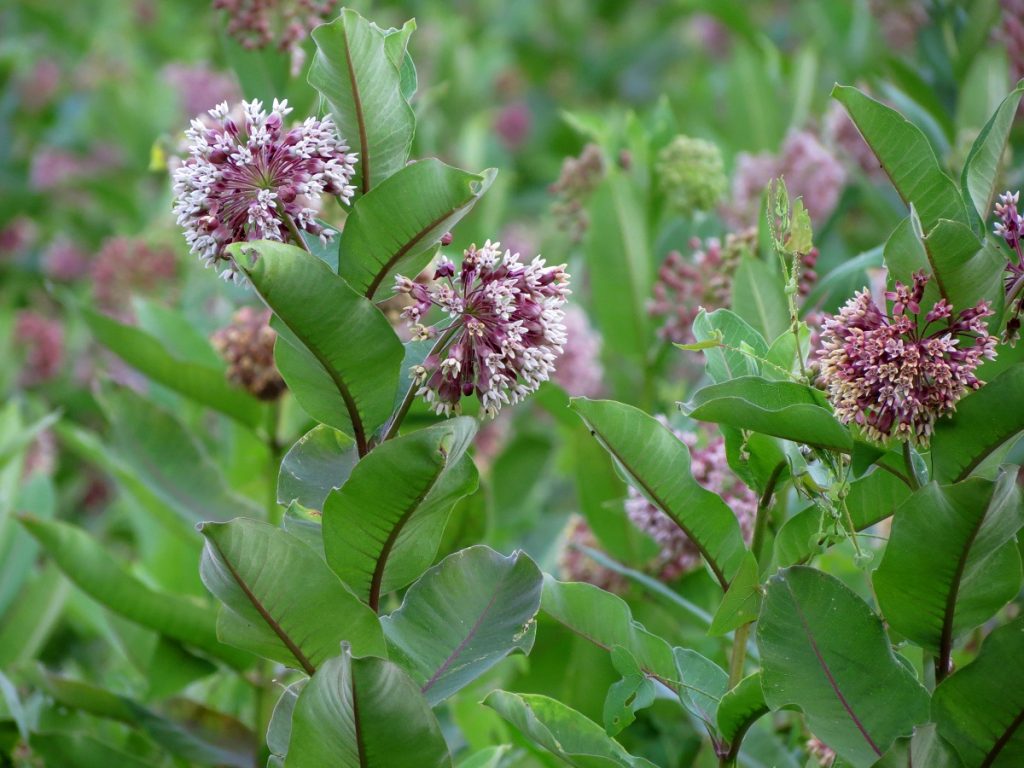
Wild Leeks (Allium tricoccum)
Wild leeks, or wild ramps, grow in rich, moist, deciduous forests.
Each plant has two leaves and it's anchored below the ground by a white bulb. A good indicator to find out if it is a wild leek or not is if the stem has a red hue that runs from the base of the leaf to the bulb.
The whole plant is edible and can be eaten raw or cooked. Just like the wild onion, you should only take what you need.
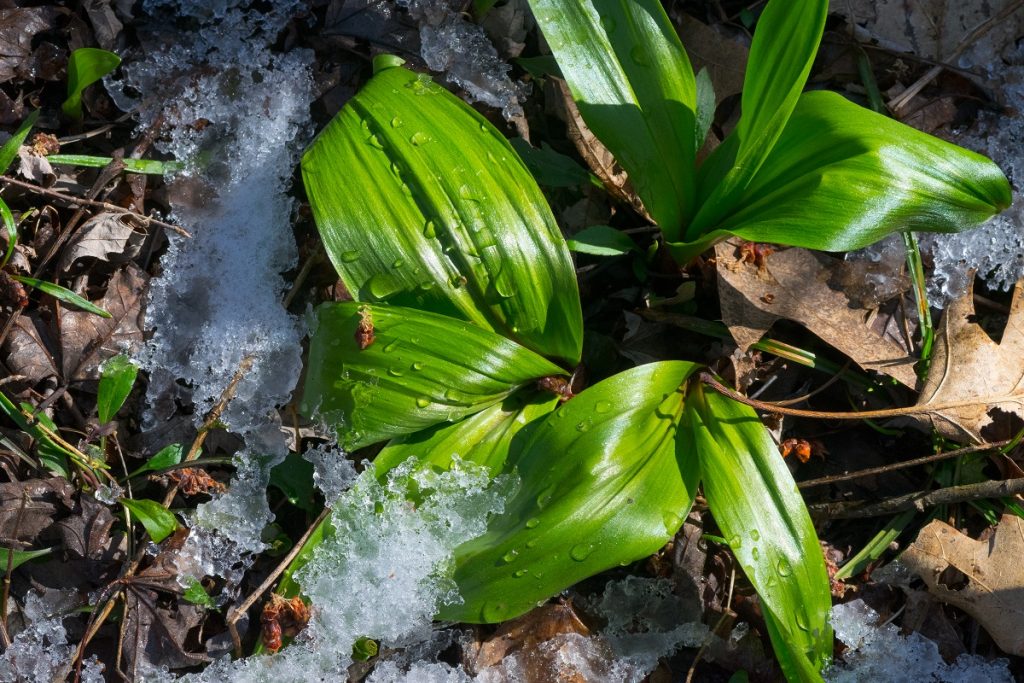
Tree Nuts
Tree nuts are an incredible survival food, as they are one of the most calorie-dense plants you can find in the wild. They grow in most North American forests.
Hickory Nuts
If you are someone who is East of the Great Plains, then you can find an abundance of hickory nuts. Hickory nuts are a protein-packed snack produced by hickory trees. They have an outer husk and inner shell and taste just like pecans. To spot a hickory nut, they are veiny like a pecan.
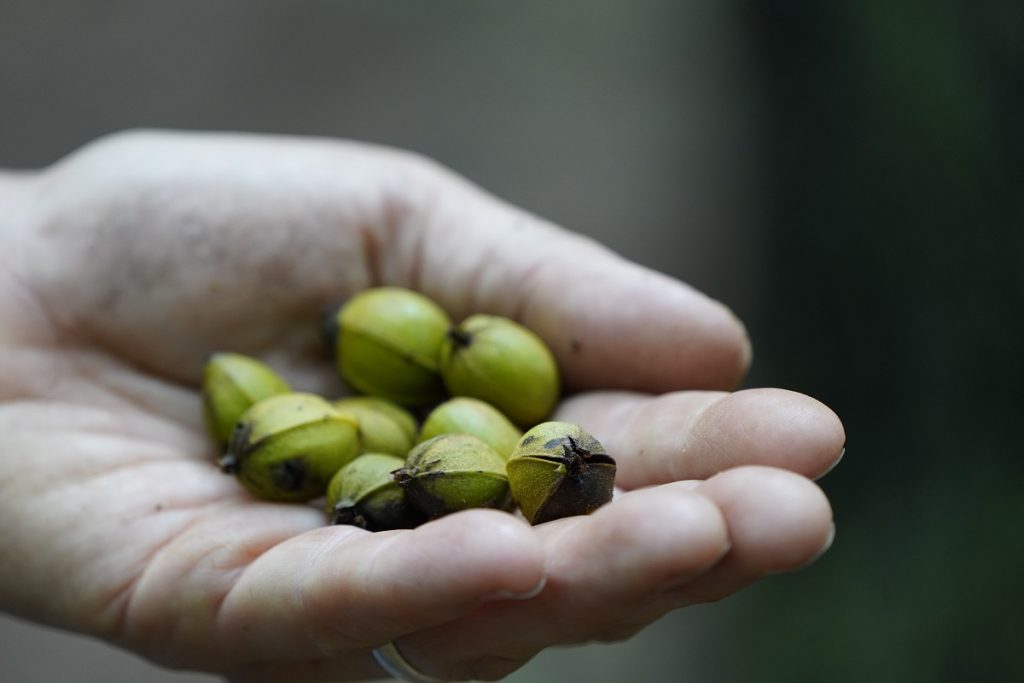
Pine Nut
If you are someone from the Southwest, the pine nut is a tasty tree nut option for you. You can find them in, you guessed - a pine cone. Likewise, they are easy to harvest and taste just like a buttered kernel. But even if you are unable to find hickory nuts or pine nuts, the humble acorn is another edible alternative.
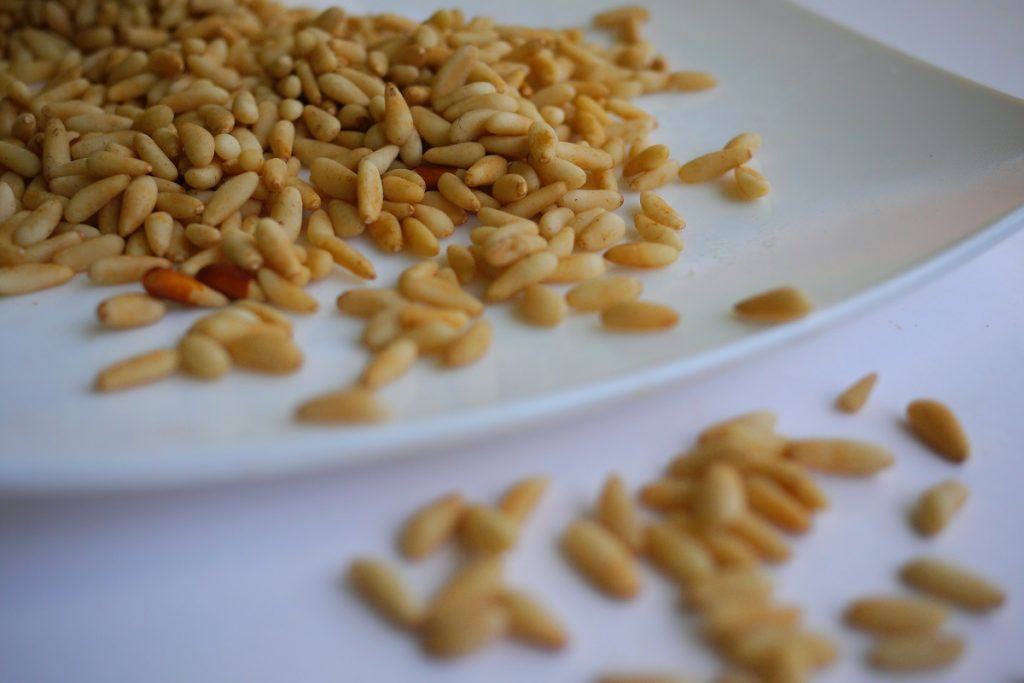
Acorn
Interestingly, the acorn was an essential food source for Native Americans. However, unlike the previous two tree nuts, the acorn requires preparation.
To properly prepare an acorn, first, you must crack the shell and remove the nut, then submerge it in a stream of water for a couple of days. The acorn has a high concentration of tannic acid, which gives it a bitter taste.
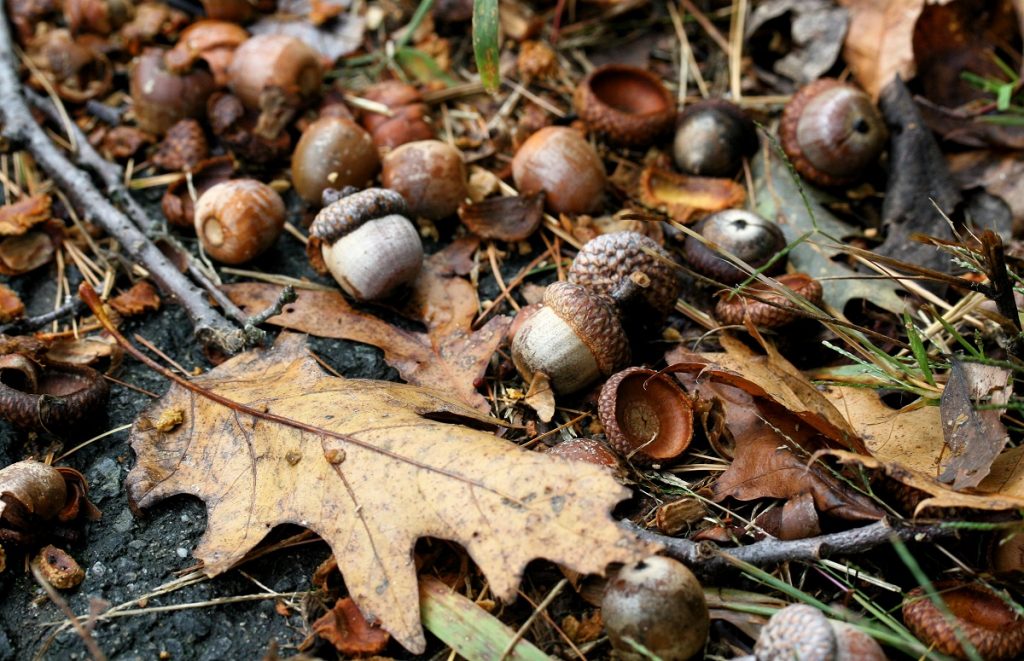
Aquatic Edible Wild Plants
For anyone hiking near a river, lake, or wetland, there is an abundance of aquatic plant life ripe for the taking. You may scan these water sources and see plant species with leaves poking out of the water.
Almost all underwater plant species are edible. Not to mention, their roots are an incredible source of nutrition.
The easy-to-recognize bulrush and cattail are a great go-to. You can distinguish these wild edible plants from their cigar-shaped tip and flower spikes. Likewise, they are high in protein and carbs. However, since they have such high protein, they are unappetizing uncooked. So if you want to eat some, consider roasting them on an open fire.
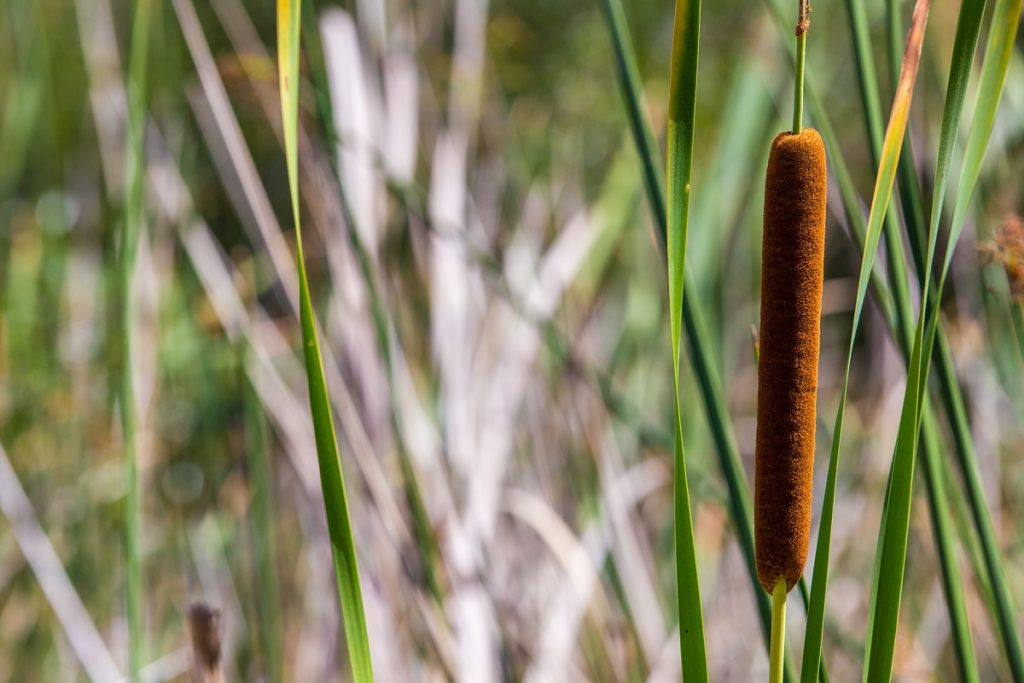
The Universal Edibility Test
Even if you follow this guide, you may stumble upon a tasty-looking plant but be unsure whether it is safe to eat. Fortunately, Backpacker created a Universal Edibility Test to help determine whether a plant is indeed safe to consume.
The criteria go as follows:
- Use your nose: if it smells rotten, toss it out.
- If not, put the plant on your forearm for a few minutes. If it begins to burn, itch, or have any other effect, toss it out.
- In case everything is okay and your skin is clear, kiss the plant and wait for 15 minutes.
- If the plant passes the previous three steps, take a small bite. If it is bitter or soapy, immediately spit it out.
- After eating a small amount, wait a few hours. If you are not sick, then the plant is probably safe to eat.
Make Your Way With KUHL
When venturing out in the forest, always dress adequately - especially in the summer season. Check out our top-notch outdoor clothing for men and women, and pick something with pockets for all those tasty nuts and berries along the trail!


